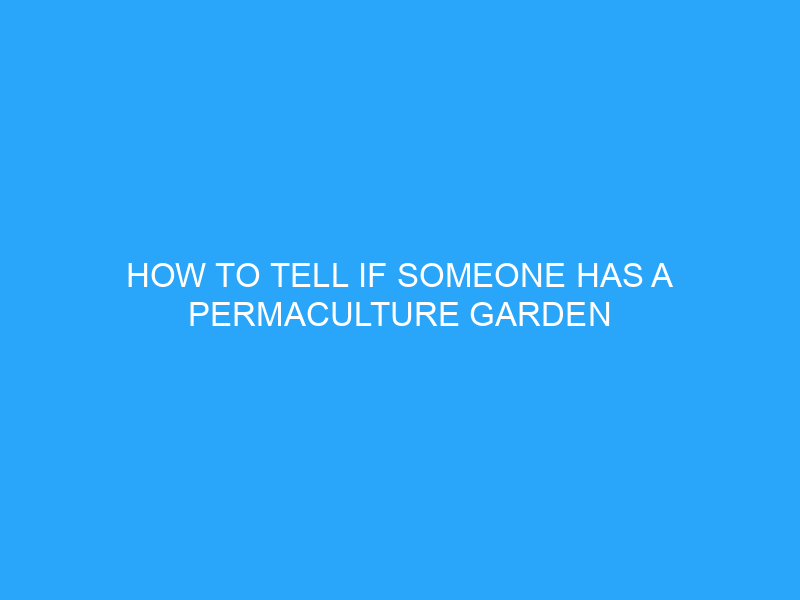aculture garden
Introduction: Have you ever wondered how to tell if someone has a permaculture garden? Permaculture is a system of agriculture that works with nature to create a productive and sustainable environment. It involves designing and managing landscapes in a way that mimics natural ecosystems. In this article, we’ll discuss how to tell if someone has a permaculture garden.
What is Permaculture?
Permaculture is a system of sustainable agriculture that works with nature to create a productive and ecologically balanced environment. It is based on the principles of natural ecology and the use of renewable resources. Permaculture gardens are designed to be self-sustaining and to reduce the need for inputs like water and fertilizer. The goal is to create a sustainable, self-sufficient system that mimics natural ecosystems.
How to Tell if Someone Has a Permaculture Garden
Permaculture gardens have certain features that make them distinctive. Here are some of the signs that someone has a permaculture garden:
1. Diversity of Plants
One of the hallmarks of a permaculture garden is the diversity of plants. Permaculture gardens feature a variety of edible, medicinal, and ornamental plants. The garden may also include native plants, which provide food and habitat for beneficial insects and wildlife.
2. Composting
Permaculture gardens rely on composting to create a rich, fertile soil. Composting involves breaking down organic material like kitchen scraps, yard waste, and manure into a nutrient-rich soil amendment. Composting is an essential part of a permaculture garden and is usually visible in the form of a compost pile or bin.
3. Water Conservation
Permaculture gardens are designed to conserve water. This is done through the use of rain barrels, mulch, and other water-saving techniques. The garden may also feature swales, which are shallow trenches that capture and store rainwater.
4. Multi-Functional Elements
Permaculture gardens often feature multi-functional elements like trellises, raised beds, and compost bins. These elements are designed to serve multiple purposes, such as providing habitat for wildlife and storing water.
5. Permaculture Principles
Permaculture gardens are designed with certain principles in mind. These principles include using renewable resources, working with nature, and creating a self-sustaining system.
Frequently Asked Questions about Permaculture Gardens
1. How much space do I need for a permaculture garden?
The size of a permaculture garden will depend on the size of your property and the types of plants you want to grow. A small permaculture garden can be created in as little as 10 square feet, while a larger garden may require more space.
2. What plants are best for a permaculture garden?
The best plants for a permaculture garden will depend on your climate and the type of soil you have. Generally, native plants, edible plants, and medicinal plants are all suitable for a permaculture garden.
3. What is a permaculture garden?
A permaculture garden is a type of sustainable agriculture system that works with nature to create a productive and ecologically balanced environment. Permaculture gardens are designed to be self-sustaining and to reduce the need for inputs like water and fertilizer.
4. What are the principles of permaculture?
The principles of permaculture include using renewable resources, working with nature, and creating a self-sustaining system. Other principles include minimizing waste, minimizing energy use, and maximizing efficiency.
5. How do I start a permaculture garden?
The best way to start a permaculture garden is to start small and build gradually. Begin by researching your climate and soil type, choosing the right plants, and creating a plan for your garden. Once you have a plan, you can start building the elements of your permaculture garden, such as compost bins, swales, and raised beds.
Conclusion
Permaculture gardens are a great way to create a sustainable and self-sufficient environment. To tell if someone has a permaculture garden, look for signs such as diversity of plants, composting, water conservation, multi-functional elements, and permaculture principles. If you’re interested in creating your own permaculture garden, start by researching your climate and soil type and creating a plan. With the right planning and design, you can create a permaculture garden that is productive and ecologically balanced.






